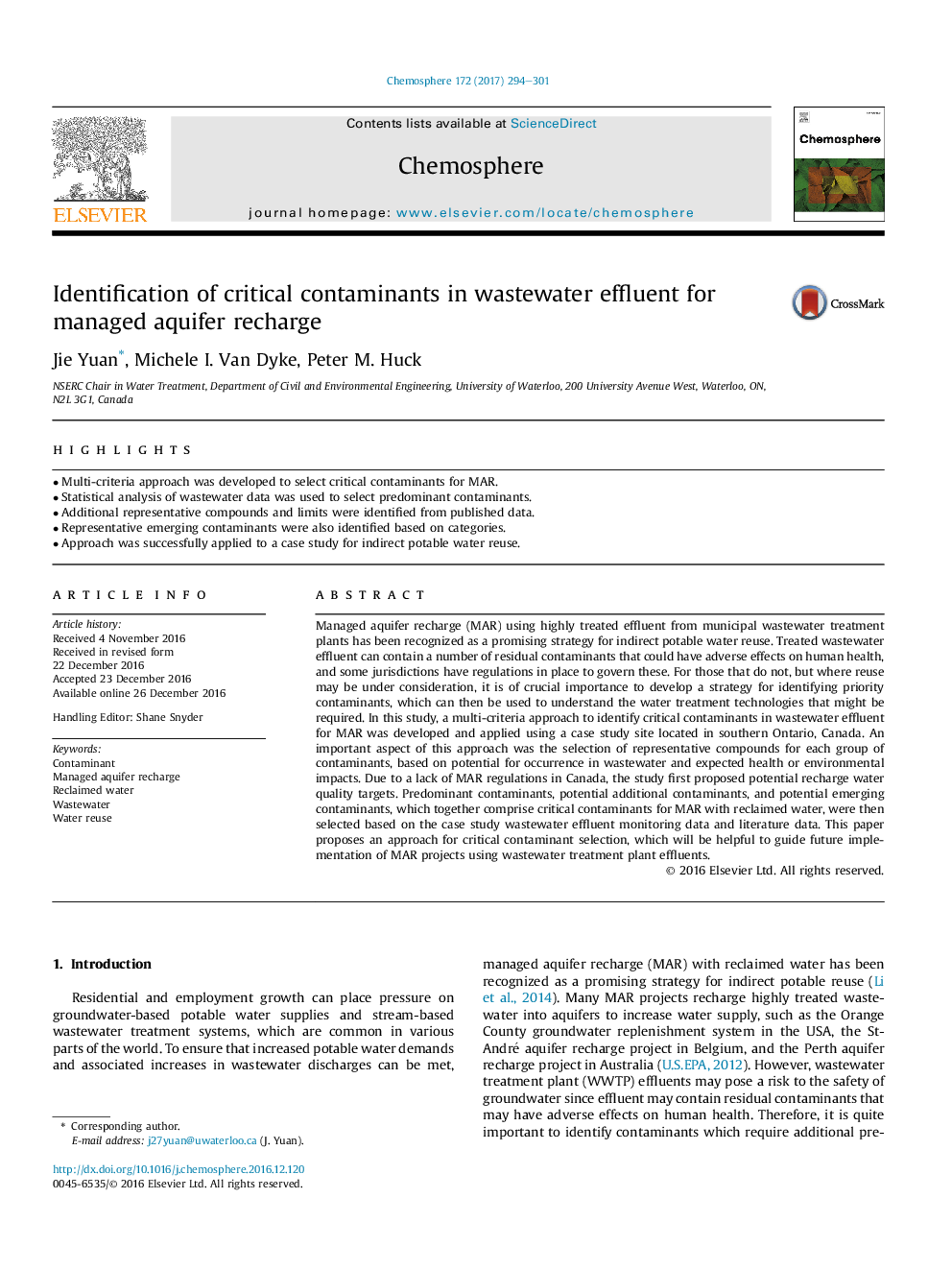| Article ID | Journal | Published Year | Pages | File Type |
|---|---|---|---|---|
| 5747106 | Chemosphere | 2017 | 8 Pages |
â¢Multi-criteria approach was developed to select critical contaminants for MAR.â¢Statistical analysis of wastewater data was used to select predominant contaminants.â¢Additional representative compounds and limits were identified from published data.â¢Representative emerging contaminants were also identified based on categories.â¢Approach was successfully applied to a case study for indirect potable water reuse.
Managed aquifer recharge (MAR) using highly treated effluent from municipal wastewater treatment plants has been recognized as a promising strategy for indirect potable water reuse. Treated wastewater effluent can contain a number of residual contaminants that could have adverse effects on human health, and some jurisdictions have regulations in place to govern these. For those that do not, but where reuse may be under consideration, it is of crucial importance to develop a strategy for identifying priority contaminants, which can then be used to understand the water treatment technologies that might be required. In this study, a multi-criteria approach to identify critical contaminants in wastewater effluent for MAR was developed and applied using a case study site located in southern Ontario, Canada. An important aspect of this approach was the selection of representative compounds for each group of contaminants, based on potential for occurrence in wastewater and expected health or environmental impacts. Due to a lack of MAR regulations in Canada, the study first proposed potential recharge water quality targets. Predominant contaminants, potential additional contaminants, and potential emerging contaminants, which together comprise critical contaminants for MAR with reclaimed water, were then selected based on the case study wastewater effluent monitoring data and literature data. This paper proposes an approach for critical contaminant selection, which will be helpful to guide future implementation of MAR projects using wastewater treatment plant effluents.
